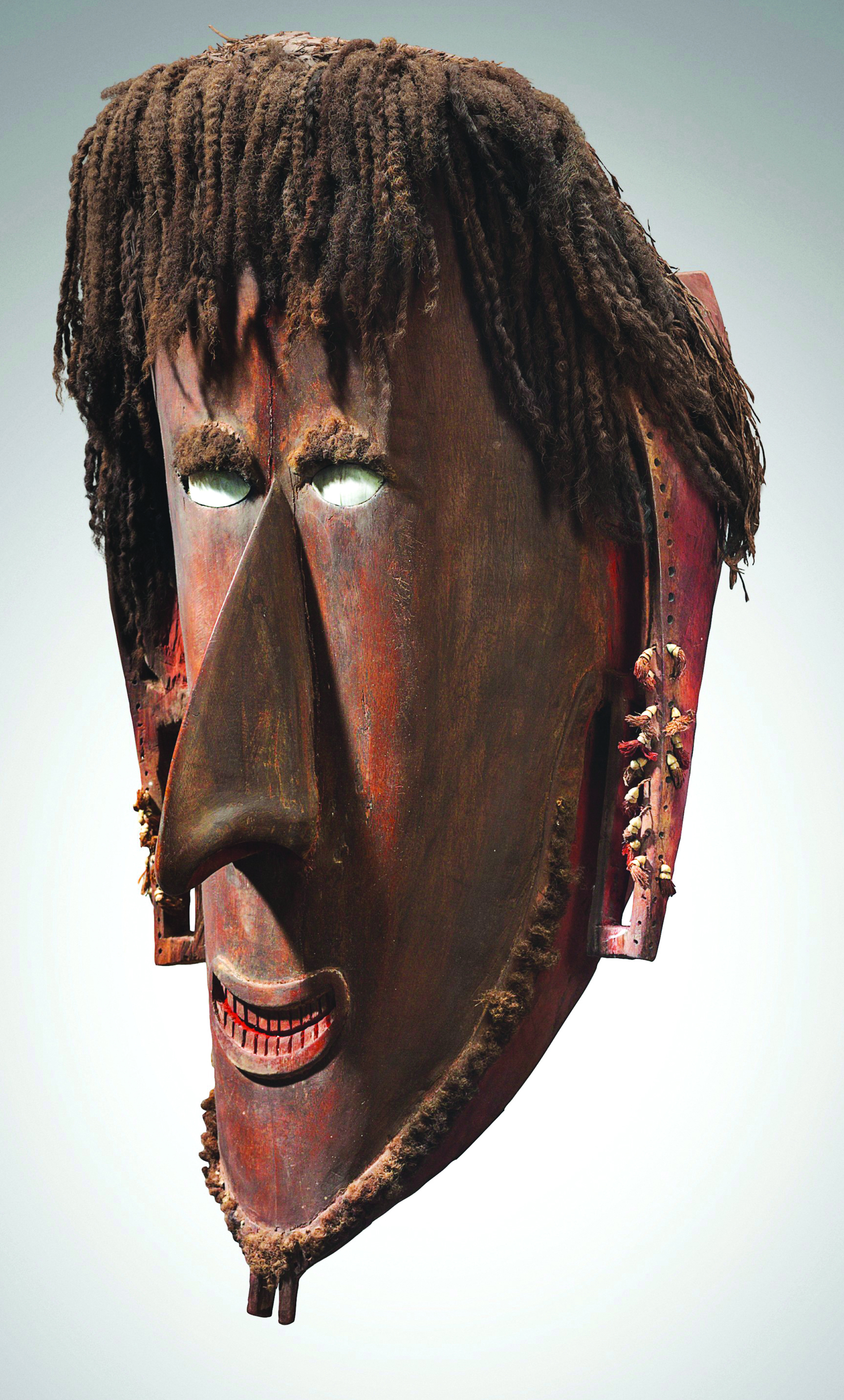
Saibai Island, Torres Strait (Northern Islands, Australia), mask, 1870, wood, human hair, shell, seedpod, fiber, pigment, melo shell and coix seeds, Toledo Museum of Art, purchased with funds from the Libbey Endowment, gift of Edward Drummond Libbey, 2015.
TOLEDO, OHIO — A choice example of Oceanic art has been added to the collection at the Toledo Museum of Art. Purchased at Christie’s in Paris on December 3, the mask is one of four known distinguished examples from Saibai Island in the Torres Straits and has been heralded by scholars as the most notable
The earliest written record of a Saibai Island mask was in 1606 when Spanish explorer Don Diego de Prado y Tovar wrote of a turtle shell example while on exploration voyage with Luís Vaz de Torres, for whom the region is named.
Masks in this style are called “mawa,” meaning “face,” and are believed to represent mythical heroes whose appearances signal important events and rites of passage. The “mawa” ceremony was held to celebrate the ripening of fruits and other crops around the month of September. The masks were carved from wood and distinct because they do not have sight apertures for the wearer, meaning that they were likely worn on the top of the head by a dancer wearing a costume of coconut leaves. They could also have been used as a kind of architectural ornament. There are only three other examples in this style, two in the Australian Museum in Sydney and one in Barbier Mueller Museum in Geneva, Switzerland.
Dr Brian Kennedy, president, director and CEO of the Toledo Museum of Art, said, “This is an extraordinary, spectacular example of the sculptural tradition of mask making in the Torres Strait Islands. We have rarely seen such a striking and memorable mask. We are thrilled to have acquired an object of such rarity which expands the global range of the Toledo Museum of Art’s celebrated art collections.”
This example, from the Jolika Collection, demonstrates the powerful proportions used in Torres Strait Islander art. It is revered as the best example of an extremely rare body of Torres Strait art. The mask measures almost three times the size of a human face and the trapezoidal shape combined with shell eyes glowing against the dark brown wood create a haunting expression.
Wooden masks in the Torres Straits are particular to the Western island of Saibai, unlike the more typical turtle shell masks of the South Seas. This is attributed to the proximity of Saibai Island to the sculptural wood tradition of New Guinea.
The museum is at 2445 Monroe Street at Scottwood Avenue. For more information, www.toledomuseum.org, 419-255-8000 or 800-644-6862.

